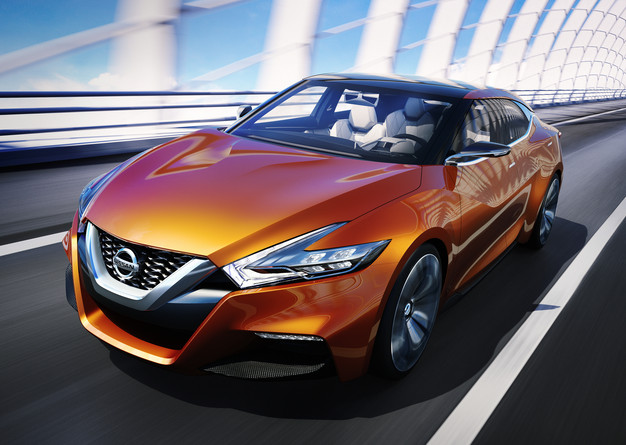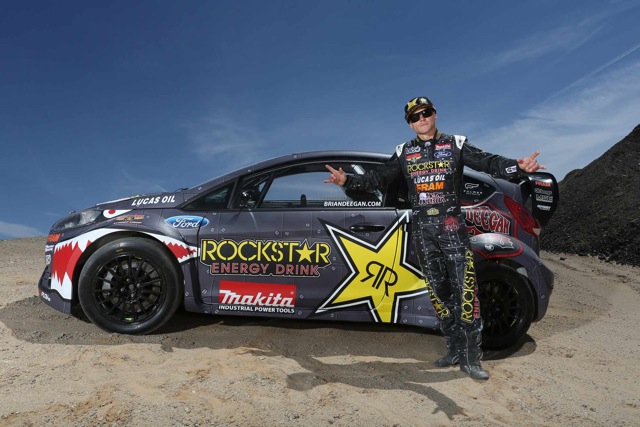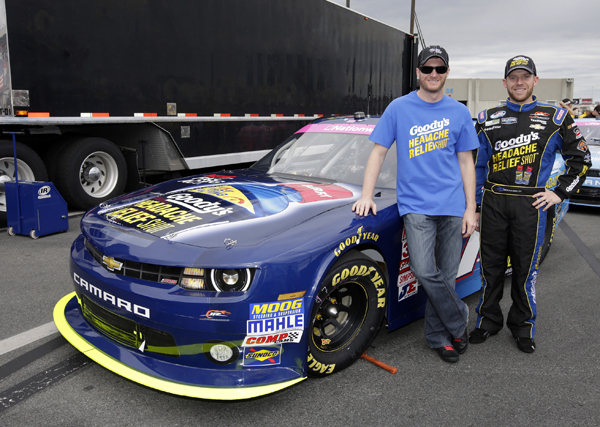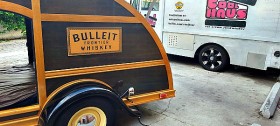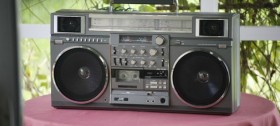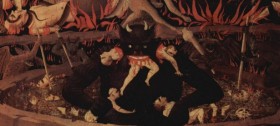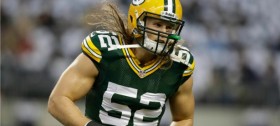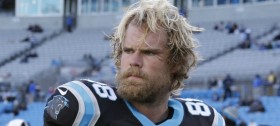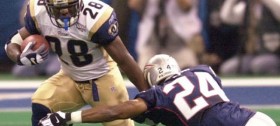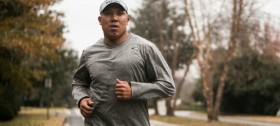Posts tagged car

Lexus Unveils All-New Lexus RC F at NAIAS
Want power, precision and passion? Lexus revealed its most powerful V8 engine in the all-new 2015 RC F performance coupe at the North American International Auto Show in Detroit. The F performance model, based on the RC coupe, gets its powerful roar from more than 450 horsepower and more than 383 lb.-ft. torque.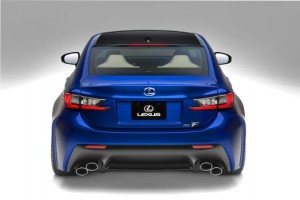
To get that amount of power efficiently to the ground the RC F will make use of a Torque Vectoring Differential (TVD) to ensure remarkable handling and performance. The power will transfer through a newly calibrated eight-speed Sports Direct Shift (SPDS) transmission with paddle shifters.
“I’ve built RC F to be enjoyed by all enthusiasts – no matter what their level of expertise,” said RC F chief engineer Yukihiko Yaguchi.
“There’s a misconception that racing cars are hard to drive. In fact, they’re easy in the right hands because they’ve been purpose-built for the skill level of their drivers. It’s the same with RC F.
“Electronics can be modified instantly on board to provide appropriate levels of performance and protection. But even at its basic setting, it’s a blast.”
Driving Dynamics with More Power and Usability
The RC F has an all-new 5.0-liter 32-valve V8 engine that will provide increased maximum power at higher engine rpm than previously possible. For the first time in a Lexus performance engine, the RC F uses the Atkinson cycle at cruising speeds for enhanced fuel economy and then switches to the Otto cycle at higher rpm to develop impressive performance levels.
Driver engagement has been made possible by purpose designed sound and power delivery. A uniquely tuned eight-speed Sports Direct Shift (SPDS) transmission improves linear throttle response.
It helps the driver control the torque and power precisely as it is applied.
The newly calibrated VDIM adds a vertical G-sensor to provide greater vehicle stability
Torque Vectoring Differential
The RC F uses a Torque Vectoring Differential (TVD), a first in a Lexus, to increase driving performance. It has three operating modes:
- Standard for a balance of nimble performance and stability;
- Slalom for emphasis on nimble steering response; and
- Track to help with consistent stability, ensuring the vehicle stays on the intended corning line as the driver applies more throttle.
Handling
The foundation for the vehicle’s mechanical grip is the highly rigid body with large cross-section rocker panels and a very stiff front lower brace. Specialized Lexus manufacturing techniques are also used, including body adhesives, laser-screw welding, laser brazing and multi-spot welding. Grip is further enhanced through use of a wider tire and wheel assembly.
RC F has front and rear coil-spring independent suspension, with monotube gas-filled shock absorbers and ball-jointed stabilizer bars. Unsprung weight is reduced by the adoption of three new 19-inch diameter forged aluminum wheels which minimize tire/wheel assembly mass and maximize rigidity.
Exterior Design
Lexus RC F adds to the stylish body of the new RC coupe on which it is based. The RC F features its own version of the Lexus signature spindle grille which dominates the front of the vehicle from hood line to lower lip. The grille has a subtle F-mesh pattern on the lower half.
In profile view RC F has a unique front hood which raises the peak of the vehicle, creating a powerful side view.
The RC F takes design cues from the Lexus LFA supercar, especially in essential air cooling and aerodynamics. Its hood air vent, such as those on the LFA, combined with front cooling ducts contribute to engine cooling and overall vehicle stability.
As in the LFA, an active rear spoiler is incorporated into the trunk lid to provide down force at speeds of more than 50 mph. The active spoiler is a highlight of RC F’s aerodynamic package which includes careful tuning of the underbody, the intakes in the grille and the front fender vents, and strategic placement of the aero stabilizing fins.
To the side, front fender ducts in the shape of an L also aid cooling performance while adding to the aggressive stance.
The RC F’s available carbon fiber package offers a clear coated carbon fiber roof and active rear spoiler drawn from the LFA production experience.
Interior Design
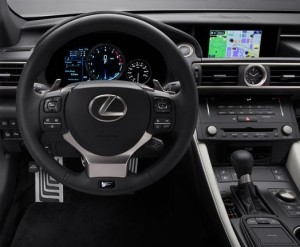 Uniquely designed components, including combination meters, the steering wheel, seats, ornamentation and pedals, convey a sense of connection with the driver that only a Lexus F performance model can achieve.
Uniquely designed components, including combination meters, the steering wheel, seats, ornamentation and pedals, convey a sense of connection with the driver that only a Lexus F performance model can achieve.
RC F’s all-new combination meters are further developed from LFA while also referencing aircraft cockpit instruments. The meters provide a wide range of easy to read information for the various drive modes.
The combination meters include a large centrally mounted tachometer that alters according to drive mode, digital and analog speedometer, differential torque vectoring monitor, G-Force meter, oil and water temperature gauges, mileage information and a stopwatch.
The driver’s connection to the RC F is paramount. The RC F debuts a Lexus-first elliptical cross-section thick grip steering wheel for greater control during performance driving. The placement, shape and operation of paddle shifters make it easier to change gears on the track and in other performance circumstances.
The all-new high back seats have been designed for exceptional holding performance. An integrated foaming technique creates a highly supportive and taut fitting seat with trim material that stays fixed.
Jan 14th

Nissan Sport Sedan Concept Makes World Debut
Design has long been a differentiator between Nissan and its competitors – along with performance, innovation and technology. Now, as the company celebrates its 80th anniversary, it is doing so with the world debut of the Nissan Sport Sedan Concept at the 2014 North American International Auto Show in Detroit.
The Sport Sedan Concept, a design study with a particular emphasis on next-generation design and sporty style, was created to embody the essence of a true sports sedan – that rare execution of 4-door sedan with the aura of a real sports car. It previews a future production vehicle intended for owners with a passion for cutting-edge design and driving dynamics.
“The Sport Sedan Concept shows a new, highly emotional and energetic design direction that takes Nissan’s legendary approach of applying sports car principles to a sedan to the next level,” said Nissan Senior Vice President and Chief Creative Officer Shiro Nakamura. “The Sport Sedan Concept captures that essence with bold and exciting sports car design and proportions.”
Next-Generation Nissan Design Language
The Sport Sedan Concept joins a trio of advanced concepts that share signature design aspects that will be adapted to all future Nissans. Along with the Nissan Resonance and Friend-ME concepts that were introduced in 2013, the Sport Sedan Concept shares the new V-Motion front aspect, “floating” roof and boomerang-shaped headlights and taillights.
As demonstrated by the three diverse concepts, these distinctive design cues will be incorporated into a range of body types from sedans to crossovers.
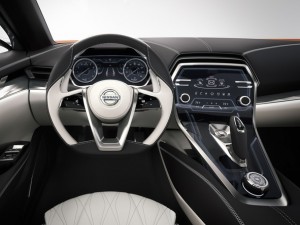 “Our new design direction mirrors the strength, power and capabilities of the engineering and innovation that serves as the foundation of every Nissan vehicle,” said Nakamura. “Nissan is a brand for people seeking bold and passionate experiences, and who are willing to make choices outside of traditional boundaries. That’s why Nissan is committed to breaking new ground in automotive design, as expressed in the stunning new Sport Sedan Concept.”
“Our new design direction mirrors the strength, power and capabilities of the engineering and innovation that serves as the foundation of every Nissan vehicle,” said Nakamura. “Nissan is a brand for people seeking bold and passionate experiences, and who are willing to make choices outside of traditional boundaries. That’s why Nissan is committed to breaking new ground in automotive design, as expressed in the stunning new Sport Sedan Concept.”
The exterior of the Sport Sedan Concept is marked by low, wide proportions, with a lowered hoodline and reduced ground clearance compared to traditional sedans – elements that would be right at home in a sports car.
The “V-Motion” movement of the front end flows from the dramatic chromed grille up through the hood. The front of the Sport Sedan Concept also incorporates the large LED boomerang headlights, a deeply scooped front fascia and wide, sloped windshield.
The profile of the vehicle is equally powerful, with its dynamic bodyside lines adding a strong sculptural feel and connecting the wheels and tires – which are pushed out to the four corners.
There is a projection of motion, even when the vehicle is standing still. The Sport Sedan Concept rides on custom 21-inch aluminum-alloy wheels mounted with low-profile 275/30R21 tires.
The distinctive silhouette blends smoothly into the rear design, which is capped by the high deck, large chrome trunk accent and wide, deeply scooped rear fascia. As in the front, the boomerang rear combination lights accentuate the centered feeling and push outward to edges.
The unique “floating” roof adds a sense of openness and lightness in contrast to traditional sedans’ heavy cabin appearance.
“The innovative roofline, which is also prevalent on Resonance and Friend-ME, makes it seem as if there are no pillars at all, enhancing the sense of athleticism and sportiness,” said Nakamura. “The roofline also contributes to the Sport Sedan Concept’s class-leading stance, which balances the look of the substantial lower body and a streamlined cabin.”
The final exterior touch is the unique “Strad Amber” paint that was inspired by the craftsmanship and rich finish of noted classic violins – instruments capable of producing vibrant intensity at times and at other times a soft stillness. The elaborate candy color paint finish is achieved through application of an orange-amber topcoat over a base of gold paint, creating a distinctive depth and bespoke richness.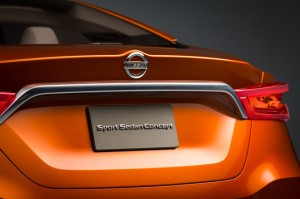
The Sport Sedan Concept’s interior also offers cues to future production designs. Premium materials are found throughout, with the use of diamond-shaped graphics on the quilted seats, stitching and panels enhancing the sense of dynamic motion. Rather than traditional flat surfacing, the diamond treatment adds three-dimensionality. The edgy and geometric look was inspired by modern furniture, apparel and accessories. The interior also features high-contrast colors and facet metallic accents. All these aspects finely express Nissan’s individual authenticity and modernity.
The front-wheel drive Sport Sedan Concept is powered by a 300-plus horsepower 3.5-liter V6 engine backed by a sport-tuned Xtronic CVT® and features an innovative suspension layout with performance dampers.
The Nissan Sport Sedan Concept was created by Nissan Design America in San Diego, California and developed at the Nissan Global Design Center in Atsugi, Japan.
Jan 14th

Brian Deegan Interview
Brian Deegan is an innovator in action sports. He is considered to be motocross legend and as a businessman has been nicknamed “The General.” At the young age of 17 Deegan moved from his hometown of Omaha, Nebraska and traveled to Southern California with hopes of making a name for himself in the world of motocross.
In 1997 at the Coliseum in LA, Brian made history with the Freestyle Motocross move called “ghost riding” as he crossed the finish line. Brian has won many awards in actions sports. Brian currently competes in Motocross, Freestyle Motocross, Rally Car, and Short Course Trucks as founder and co-owner of the Metal Mulisha.
I caught up with Brian to chat with him about how he entered the world of motocross, injuries, and his clothing line.
Art Eddy: Let’s go back a bit in time. At age 17 you left Omaha, Nebraska for Southern California. You had big dreams of making a name for yourself in the world of motocross. Can you recall that one moment that made you take that big leap?
Brian Deegan: Growing up in Nebraska and going to high school there I had already traveled all over the United States racing in amateur motocross. I think that just getting to see all the parts of the country and places like Southern California really made me want to do that move there. The lifestyle there made me want to take the leap from Nebraska and go to California. Or maybe it was the girls there. I don’t know. (Both laugh)
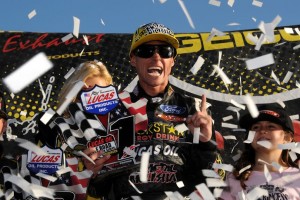 AE: Was there ever a time in the beginning where you thought you had made a mistake?
AE: Was there ever a time in the beginning where you thought you had made a mistake?
BD: When I moved out there I didn’t have anything. I went out there with a pick-up truck, two dirt bikes and a credit card. I was sleeping on my buddy’s floor. I was renting a room and just trying to make things happen. There were points where it got tough, but I realized that I never wanted to go back.
I had to make it work. If I went back my dad wanted me to go to college. I thought that if I did that I would fall back into the normal routine, which is fine, but that was not what I wanted to do.
AE: When you look back do you have one moment that you can say to yourself that you made it?
BD: Yeah, I think it was the moment where I started getting paid by sponsors. That was when Freestyle Motocross started and X-Games as well. I got my first few main sponsors that were actually paying me really good money. That was when I realized that I was on to something. I feel like I hit the sport at the right time. We were the guys that pioneered in action sports. I realized at that moment that it was the right move. It worked out well.
AE: Out of the many accolades and awards you have won does one award stand out more than the others?
BD: I would say that the biggest moment that stands out the most was when I won the L.A. Coliseum Supercross. I went against all odds and beat the best guys as a privateer. I ghost rode my bike over the finish line, which at that time was unheard of.
I walked away from the sport and started up freestyle and did the first 360 on a dirt bike at the L.A. Coliseum. I won the gold medal there that year in best trick. Those were probably the biggest highlights. That was before I got into four wheels, which was a whole new realm of highlights.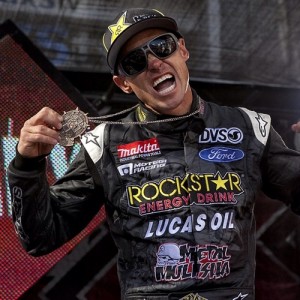
AE: To say that you are fearless is a total understatement. From what I read you have experienced multiple near-death experiences, several broken bones, a lost kidney, and a severe spleen injury. What gets you back on the track time and time again?
BD: I would say it was the will to win. Injuries are never something you plan. So really what they do is just stall you out. They are like hurdles on your way to your original goal. I always saw it as just that. I had injuries and a few near death experiences. Those basically just slowed me up for my goals. I still move forward and was always able to block it out and get back to compete. Yet getting older and having kids your priorities change.
AE: Tell me about the company you started up in Metal Mulisha?
BD: I feel like when I was walking away from racing we were kind of the rebels of the sport. We went into Freestyle Motocross and actions sports at the X-Games as the characters of that sport. We came into the sport at the time where skateboarding and BMX was big.
Motocross stepped in and we were on the big stage where the cameras where rolling. It was time to play it up. We were the guys in all black, in spikes, and heavy metal. It kind of just took off. I was able to use my business sense and with my dad being there to help me I thought how are we going to monetize this. We turned it into a clothing brand and selling other product as well. It just took off. Now it is one of the biggest action sports brands out there.
Dec 2nd

Dale Earnhardt Jr. Is Searching For His Fastest Fan
Goody’s, the brand known for its fast-acting headache relief, and Dale Earnhardt Jr., the driver known for his speed on and off the NASCAR track, are joining forces for a nationwide search to find Dale Jr.’s fastest fan.
The Goody’s Headache Relief Shot Fastest Fan Challenge kicked off this past week at Martinsville Speedway, where Goody’s and Dale Jr. unveiled a new video to inspire fans to create their own videos depicting their speediest moments. The new video features Dale Jr. speeding through his day, making fast work of everything from solving a Rubik’s cube, to commuting to work, to dressing up for a big night out. It premiered during pre-race ceremonies at the Goody’s Headache Relief Shot 500 and on the national broadcast of the race on ESPN.
Fans can enter the Fastest Fan Challenge by uploading an original video that captures high-speed action to their own profiles on Facebook, Twitter or Instagram. To be eligible, each post must include the hashtag #FastestFan. All entries must be posted by 11:59 p.m. Eastern Time on December 1, 2013 to be considered. After five finalists are selected, fans will cast their votes for the winner on the Goody’s Facebook page. For complete rules and information on how to enter the contest, and to watch the Dale Jr. video, visit the Goody’s Headache Relief Shot Facebook page at facebook.com/GoodysHeadacheReliefShot.
Video entries will be judged on their creativity, and of course, speed. The grand prize winner will receive an ultimate NASCAR tailgate weekend hosted by Goody’s and Dale Jr., including: a race weekend RV for him or herself and three friends, travel to and from the Goody’s Headache Relief Shot 500 in Martinsville, Virginia, tickets to the race (including VIP access to the garage and pit areas), $1,000 in spending money, and a personal meeting with Dale Earnhardt Jr.
“Working with the Goody’s team to create the fast day-in-my-life video was a lot of fun,” said Dale Earnhardt Jr. “I know our fans are extremely creative. I am looking forward to seeing their videos and to meeting the Fastest Fan at next year’s Goody’s Headache Relief Shot 500.”
Think you got what it takes? Make a video and send it off for Dale to be the judge!
Nov 2nd

